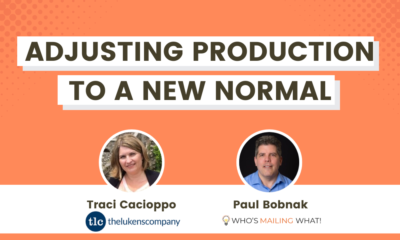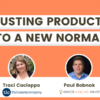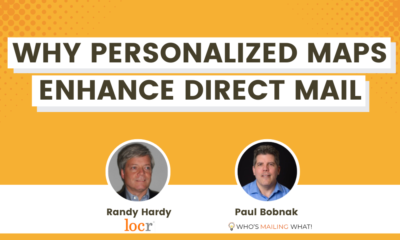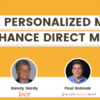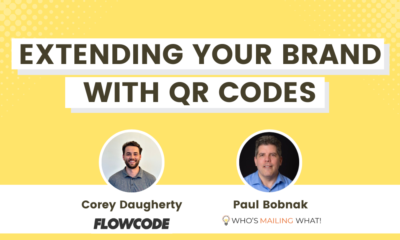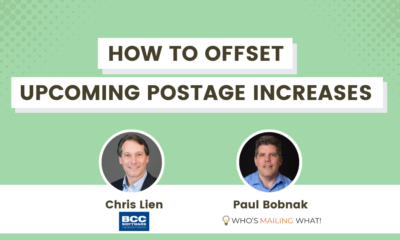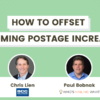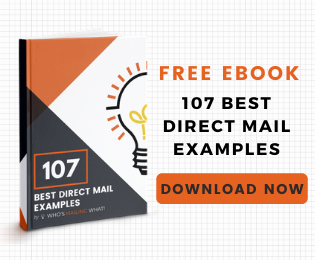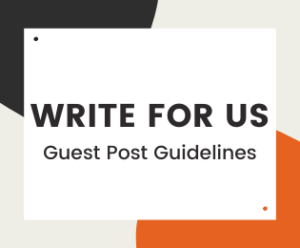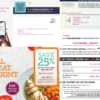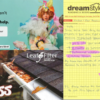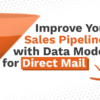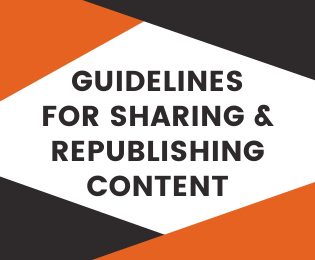MEET THE MAILERS
Meet the Mailers: Driving High-Quality Response
In this episode, we talked with LeadingResponse about how to generate leads with direct mail and effective multichannel marketing.
In this episode, I talked with Jen DeBuhr, Business Development Manager at LeadingResponse.
Headquartered in Tampa, FL, LeadingResponse helps provide customer acquisition that helps to grow health and wealth organizations. We talked about the company’s role in marketing seminars to consumers:
So we like to use direct mail as our primary vehicle for driving people to events because that’s going to get us in every way, a higher-quality responder
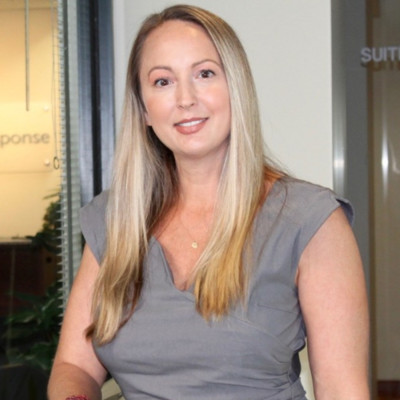 Jen DeBuhrBusiness Development Manager
Jen DeBuhrBusiness Development Manager
LeadingResponse
Among the many topics we covered:
- Jen’s background in marketing and facilitating over 40,000 events
- The verticals served by the company
- How to generate leads with direct mail
- Effective multichannel marketing
- Trends in direct mail marketing
Here are some questions and answers (edited for clarity and space):
- Thinking about your experience in using direct mail, what are some best ways to use direct mail to drive and generate leads?
Okay, so let me say right now that my answer to this is so completely biased, perfectly biased.
I am a big believer in live events. I’ve been doing live events for 20 years, and we do so much more now. So we also help our clients fill webinars, and we help our clients do just leads and kind of call leads or mail leads or we’ll help them fill different types of maybe direct appointments. But over and over and over again I come back to live events.
Some things are classic, and they’re classic for a reason … there is a reason that dinner seminars specifically have been working successfully for close to 30 years.
A lot of us work remote now. And every time I go into the office and I see my colleagues, every time I take my team out to lunch, I’m thrilled to see them. So what has happened now that we couldn’t have imagined — like two plus years ago — is that people come into events with this great appreciation for just being there and being in a room and breaking bread with someone over dinner.
And they’ll come in, and they’ll tell my client who’s hosting the event, “Thank you so much Mr. And Mrs. Jones for inviting me here. I’m so happy to be here and to learn from you today.” And so I’ve noticed this really across all industries universally. This mindset shift about dinner seminars and about live in-person events, and this greater appreciation for them than we ever could have imagined.
I talk to my clients, and I’m like, “You know, we can talk about direct appointments, and we can talk about webinars, and we can talk about all of these different methods of getting you in front of somebody. But let’s talk live events.”
And I just can’t help but go there because of the appreciation that we’ve seen recently.
I tell people a lot that, “When’s the last time you got a thank you card from somebody?” Or, you know, you get a card in the mail, and it feels lovely. Like, it’s just so rare that we get something in the mail that’s special and unique to us.
So we like to use direct mail as our primary vehicle for driving people to events because that’s going to get us in every way, a higher quality responder. It’s a cleaner list, the data is better, and it’s a higher-quality intent.
We’ll use Facebook as well. I mean, it certainly has its use. [W]e also do some page search and some other industries. I explain to people about the difference between direct mail and Facebook when it comes to events specifically; if I’m on Facebook and I click that I’m attending something [it] kind of means I might wanna go, will you remind me again?
But if I receive in the mail a direct mail invitation and it’s to someone’s birthday party or their wedding, or their dinner party or whatever, and I RSVP “Yes” to that, it’s going on my calendar. So there’s a completely different level of intent, right? So we believe in using both.
They have their pros and cons, but again, I know that I’m very biased in my love of direct mail and that old-school touch and feel of it, and my love of in-person events.
- Let’s talk about targeting. How can marketers develop customers by targeting specific audiences using mail?
And for everybody that’s gonna be a little bit different. I have some clients who specialize in marketing to women specifically, and so that’s a different persona than other clients who may be in the financial space [who] will be doing alternative investments, and they need people who have a million plus net worth.
And so with each client, there’s a conversation that I have about “What is that? What does that perfect customer look like for you?” And then I’m going to discourage them from over-qualifying it. So I think we sometimes have this tendency, and a lot of my clients will have this tendency to try and get just this exact one.
There’s a lot now that we can do in direct mail with different niches. All these selects that you can find of people who like to shop, or people who have multiple kids or people who like cruises. And I will stay away from a lot of those niches because first of all, I want any data that we get to be verifiable. So the data that we should be looking at is age, income, assets, which is a really solid algorithm we’ve been using for 20+ years. Homeowners, value of home, whether or not someone’s married, you know, these things are verifiable data. And the other data, I would encourage someone to not look so much at that because we don’t know the quality of it and don’t know how much of it is gonna be real. And what we don’t wanna do is rule out very viable prospects and potential customers for you just because you thought you wanted this one specific audience.
So sometimes they’ll ask me for a very specific audience, and I’ll be like, “Was that it?” Like, “Is that the only person that you’ll work with? Because if so, we can do that. But if we can go with a broader audience, it’s gonna serve us better.”
I think it happens all the time. [T]hey just keep tightening it and tightening it and tightening it, and then we don’t even have enough people to market to, and we don’t even know how good that data is, right? So I always recommend that we stick with the things that we can verify and that we can trust.
- So we talked a little bit about data so far. Can you talk a little bit more about how it’s used from your viewpoint in the acquisition and if you do anything in retention marketing as well?
So we are huge believers in using data and using data well.
And we really view ourselves more as a data company. I would say we definitely view ourselves more as a data company than a direct mail company for sure. And we probably view ourselves more as a data company than a marketing agency even. Like we are using data to make our marketing decisions every step of the way.
One of the big benefits of a company like ours is that as a company, we’ve done over a million – million and a half events at this point in time, plus all other sorts of marketing campaigns. For close to 30 years, we’ve compiled the data, we’ve been grabbing it and learning from it.
So we’ve been compiling the data forever and now we are investing and feeding as much of that data back to our customer base as we can so that they can really make informed marketing decisions for themselves.
Now an interesting side story. So, for the longest time people would ask us about dinner seminars and what are the best days to hold them, and we would tell them Tuesdays and Thursdays. [For] 15 years I told them Tuesdays and Thursdays. So I have a client, and we have some other clients who had been doing Mondays, and we look at the data, and the Mondays and the Wednesdays pulled just as well as the Tuesdays and the Thursdays.
So we had this story that we had been telling, but when we really look at the data, any of those weekdays are the same.
We have to be willing to change and be willing to grow and have a growth mindset based on the data that we’re presenting.
And I think we all have to be willing to learn, right? Like regardless of how long you’ve been doing this or if I’ve been doing it for 20 years or not, I have to be willing to accept that maybe I don’t know everything, and maybe Mondays are just as good as Tuesdays and the data clearly shows that, you know, that could be the case.
- Well, you brought up before, talking about other channels, Facebook is obviously pretty big. What are some keys to doing effective multichannel marketing?
I think the key to it is really being open to the word that you just used, which is multichannel and realizing that everything has got its pros and cons.
So I’m a big believer in direct mail. I love direct mail. I use it. I encourage my clients to use it as much as possible. But I also am fully understanding that direct mail is a larger investment than, say, a Facebook ad. And it’s also less flexible. Once I send something to print, it’s out. Gone. So you spent this amount of money, you printed it … you can’t change it.
Facebook advertising, on the other hand, it’s not … it won’t be as quality a responder for you. They won’t have the same level of intent. They’re not as likely to be the exact client that you want them to be, but it’s a lot less expensive. You could do Facebook ads in relatively small amounts.
You’re talking about spending hundreds instead of thousands, right? And you can change them on the fly. So my husband is an individual real estate agent. He uses Facebook ads quite a bit because for him, you know, that makes a lot of sense. For my clients, promoting events where it really, really matters to us that we get in front of the right person and that we want those people to show up.
And with direct mail, we’ll have 85-90% of them actually show up at the door and then be the right people that we want. Then that’s gonna be the better approach.
So I would say in most of my campaigns these days, I do a mix. I’ll spend most of my investment in direct mail and a little bit in social media because I wanna make sure that we have that high quality that we can bank on, that we can count on.
And then in social media, I can be more flexible. And then the bonus of social media is that every once in a while it goes viral. So sometimes you spend a tiny bit of money, and you just get a huge response. And you never know when that’s gonna happen. So I think we’d be open to using various channels, you know, as needed and based on what the client’s goals are.
- What would you say is the best value proposition for direct mail? Why does it still work for your audiences and your clients?
I think it’s what we touched on earlier, that it’s something that you can touch and feel, and that matters.
You know, a colleague and I were talking yesterday about ad blindness. You know, that we are just so flooded all the time. Every time that I go into my email inbox, I spend what feels like half my day getting rid of emails. And then sometimes I go through mad unsubscribed.
And I still end up filtering through emails after emails. So we just do our best to get rid of that. I think for most of us unless it’s an email that’s really welcome from someone that we work with currently … we’re doing our best to just move those out.
And then we go onto Facebook, or Instagram, whatever our social media preference is, and we’re scrolling, and we’re trying to get past the ads … so that we can see what it is that we want.
And then if we’re looking online at something … I can’t even tell you, I’ve been online on several websites today, and I cannot recall a single banner ad or ad that I saw on a news website or anything.
So we go blind to those things, but when something is in our mailbox, we have no choice but to at least look at it. And decipher whether or not this is something that we want to keep or toss, keep or toss, keep or toss, and that ability to be able to touch it makes a world of difference.
I am personally making it a point in my life to really send more personal direct mail so to my clients to send direct mail thank you cards. My best friend sends cards for everything. And I’m like, I just wanna be more like you.
And when we get these cards in the mail, they’re very valuable to us. …more valuable than someone’s email message could ever be.
It means something. And I joke with people all the time. I’m like, you know, our grandmothers taught us well. We really need to listen to them and send more thank you cards.
Here is our conversation. We’ve added timecodes for your convenience.
Thanks very much, Jen, for sharing your story and your expertise! To learn more about LeadingResponse, visit their website at LeadingResponse.com.
Your comments and ideas are very important to us in making your Who’s Mailing What! experience even better for you. Through these engaging talks, we hope you’ll take away practical tips, insights, and personal stories to inspire and build your own success.
If you have any feedback — or are interested in sharing your expertise and viewpoint with our wide and diverse audience on “Meet the Mailers” — please reach out to me. I’d love to hear from you!









